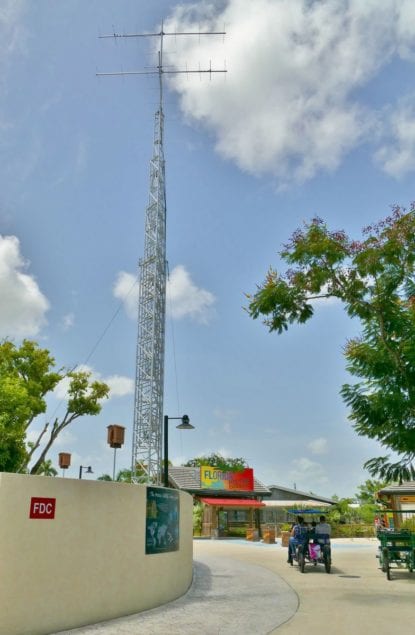
Zoo Miami is helping expand a global wildlife research network to South Florida by installing a Motus Wildlife Tracking System.
A Motus (which means “movement” in Latin) station allows tracking of the movement and behavior of birds, bats and large insects through small digitally encoded radio transmitters attached by wildlife researchers. It is particularly useful for understanding bird migrations. There are over 150 different research stations that have deployed Motus tracking tags to wildlife in North America. Zoo Miami now becomes a collaborative wildlife research partner with all of them.
Zoo Miami is the first zoo in Florida and only the third zoo in North America to have such a station. The station at the zoo has three antennae, one pointing east that will detect anything that passes between it and the middle of Biscayne Bay, one pointing north that covers the urban corridor up to Doral, and the last pointing west that will detect out to the eastern parts of Everglades National Park.
Zoo Miami is situated in the middle of the Atlantic Flyway, a major migratory pathway for birds entering and leaving North America on their way to the Caribbean, Central and South America every spring and fall. Migratory birds stop, rest and feed in South Florida every fall before they embark on their cross oceanic journeys to warmer weather. Then in the spring, South Florida is a resting and refueling oasis for those birds who make the journey back.
Where there used to be a void, now when a researcher somewhere in the U.S. or Canada attach one of these tiny transmitters to a bird, it can get detected as it passes by Miami which contributes to the greater understanding of hundreds of migratory bird species movements and behavior. This is especially important since about one third of all wintering bird species in North America have declined in population since the middle of the 20th Century and ongoing habitat loss and climate change continue to apply pressure.
In the near future, the zoo plans to post stories on its social media pages about individual birds on their journey as they visit Miami.
For more information, visit https://motus.org/.






